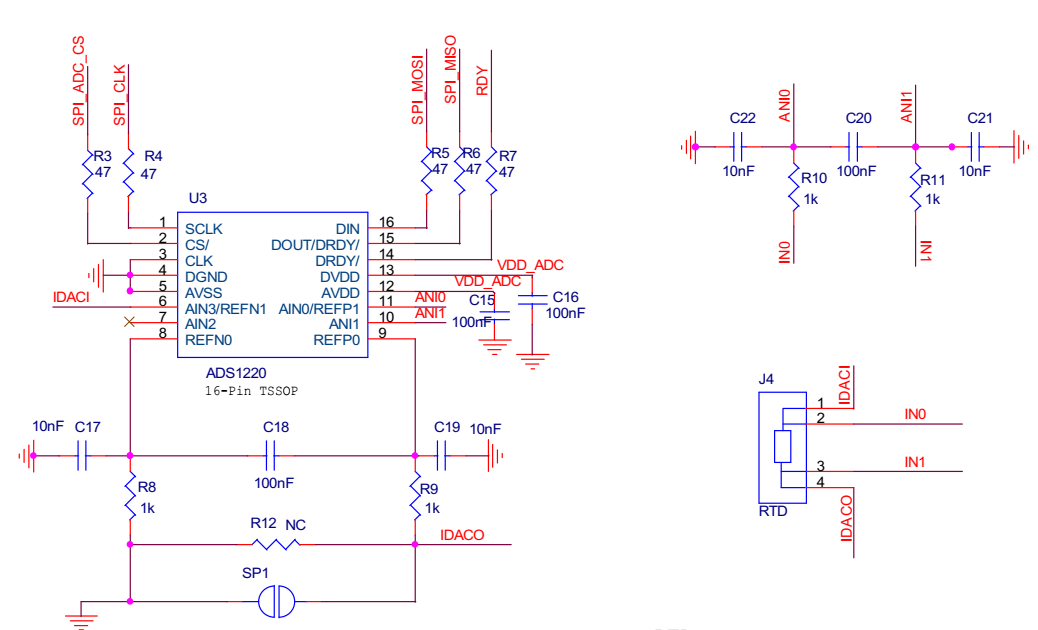Hi all,
I used ADS1220 for my project, 4 wire RTD measurement. When i put my device in Room tempearture (25-28 oC), the measurement is correct, when i put my device in 5- 10 oC, the measurement isn't correct (error -2 oC).
My configuration: Normal mode, 90 SPS, Continuous conversion mode, Current sources on, 500 µA, Disables temperature sensor, Internal 2.048-V reference selected, Simultaneous 50-Hz and 60-Hz rejection, : IDAC2 connected to AIN3/REFN1, : Only the dedicated DRDY pin is used to indicate when data are ready,: AINP = AIN0, AINN = AIN1 ,: Gain = 2, : PGA disabled and bypassed.
The schematic below, short SP1 .
Please show my mistake,
Thanks you,


